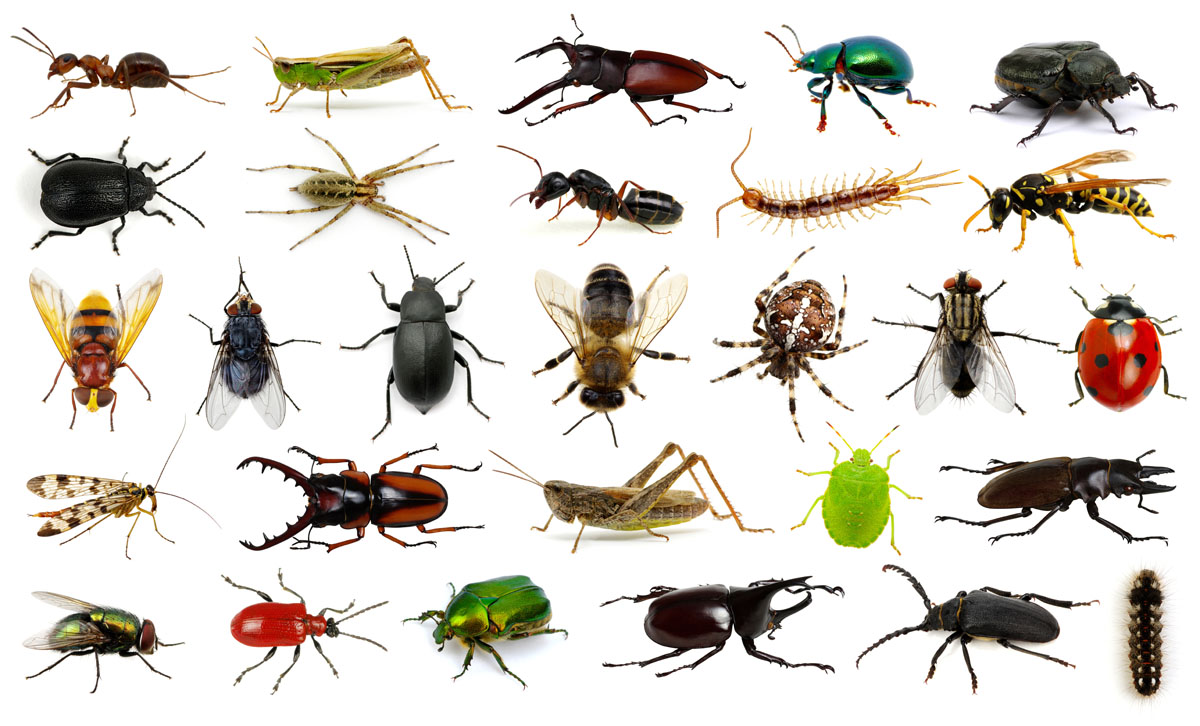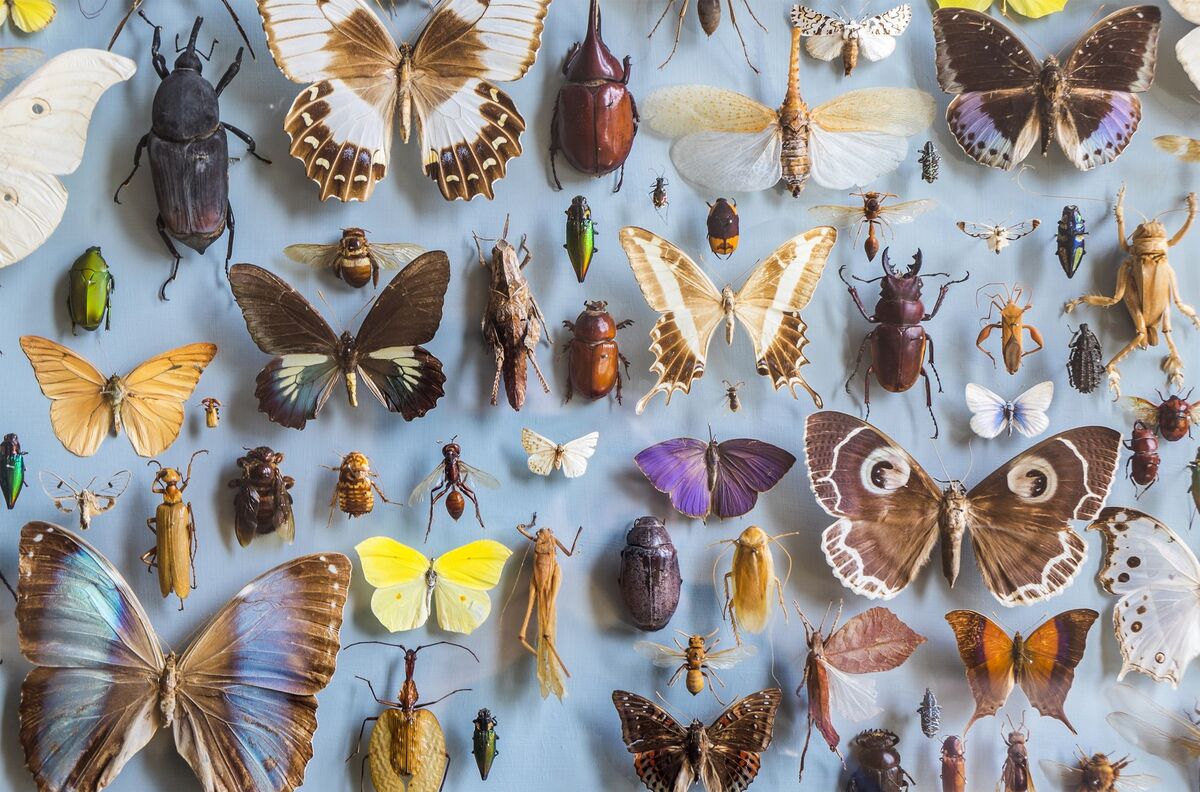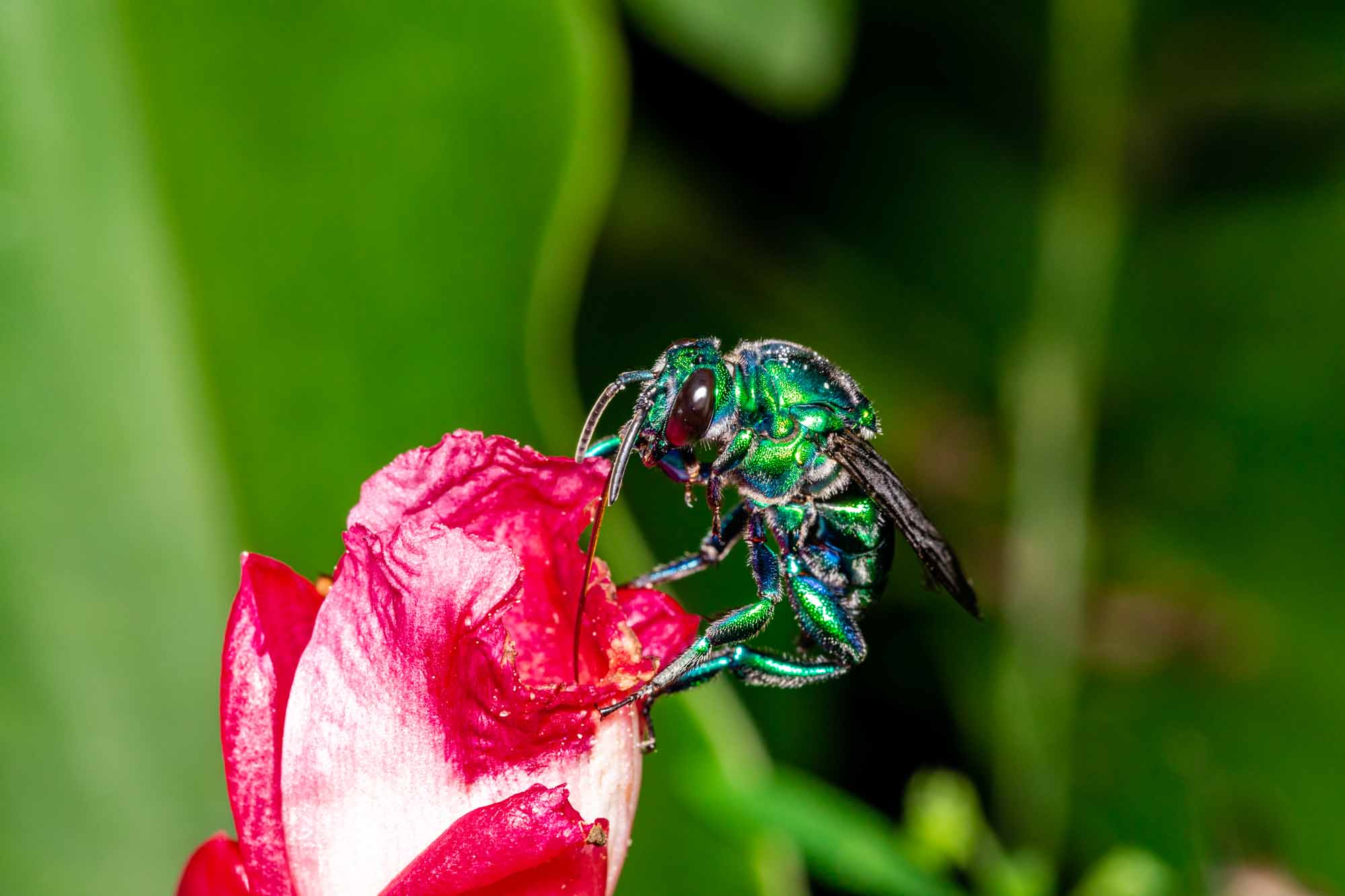Home>Gardening News and Trends>Latest News>How Many Insects Does A Bat Eat In One Night


Latest News
How Many Insects Does A Bat Eat In One Night
Modified: January 22, 2024
Discover the latest news on how many insects a bat can devour in just one night. Uncover the astonishing feeding habits of bats and their vital role in controlling insect populations.
(Many of the links in this article redirect to a specific reviewed product. Your purchase of these products through affiliate links helps to generate commission for Chicagolandgardening.com, at no extra cost. Learn more)
Table of Contents
- Introduction
- The Diet of Bats
- Insect Consumption by Bats
- Factors Affecting Bat Feeding Behavior
- Estimating the Number of Insects Eaten by Bats
- Research Methods for Studying Bat Diets
- Case Studies: Bat Feeding Behaviors in Different Environments
- Ecological Impact of Bat Predation on Insect Populations
- Conclusion
Introduction
Bats are fascinating creatures that play a crucial role in our ecosystem as voracious insect predators. They have a unique diet consisting primarily of insects, making them highly effective in controlling insect populations. The ability of a single bat to consume large amounts of insects in a single night is truly remarkable and has a significant impact on ecosystems worldwide.
Bats belong to the order Chiroptera, which is the second-largest order of mammals after rodents. There are over 1,400 species of bats, each with its own feeding behavior and dietary preferences. While some bats feed on fruits, nectar, or even small vertebrates, the majority of bats are insectivorous, relying on insects as their primary food source.
The diet of bats consists of a wide variety of insects, including moths, beetles, flies, mosquitoes, and many others. Bats have evolved unique adaptations to facilitate their insectivorous lifestyle. Their elongated fingers and thin, flexible wings allow them to fly with great agility and precision, enabling them to catch flying insects on the wing.
Bats are nocturnal creatures, which means they are most active during the night. This is when insects are also abundant, offering a plentiful food supply for bats. Their exceptional echolocation abilities further aid them in locating and capturing prey in complete darkness. By emitting high-frequency sound waves, bats can detect the echoes bouncing off objects, including insects, helping them navigate and pinpoint their location.
Understanding the feeding behaviors of bats and the quantity of insects they consume is essential for studying their ecological impact on insect populations and the overall health of ecosystems. In this article, we will delve into the fascinating world of bat diets, exploring the factors that influence their feeding behavior and the methods used to estimate the number of insects they consume in a single night.
The Diet of Bats
Bats have one of the most diverse diets among mammals, and their dietary preferences vary greatly depending on species and habitat. While some bats are specialist feeders, focusing on a specific type of insect or prey, others are generalist feeders and consume a wide range of insects.
One common misconception about bats is that they exclusively feed on mosquitoes. While bats do consume mosquitoes, they also feed on a variety of other insects that are abundant in their environment. This includes beetles, moths, flies, ants, grasshoppers, and even spiders. In fact, some larger bat species are known to hunt small vertebrates such as frogs, lizards, and birds.
In tropical regions, fruit bats, also known as frugivorous bats, feed primarily on nectar, pollen, and fruits. These bats play a critical role in pollination and seed dispersal, contributing to forest regeneration and plant diversity.
Another interesting feeding behavior exhibited by some bats is the consumption of blood. Vampire bats, which are found mainly in Central and South America, feed on the blood of other animals. However, it is important to note that the majority of bats are insectivorous and do not feed on blood.
It is also worth mentioning that some bats are known to engage in a behavior called “gleaning.” Instead of catching insects in mid-air, these bats forage for insects by plucking them directly from foliage or the ground. This behavior is commonly observed in smaller, insectivorous bats that inhabit dense forests where there may be limited open space for aerial hunting.
The dietary preferences of bats are closely tied to their ecological niche and the availability of food sources in their specific habitat. Their ability to adapt their diet to environmental changes makes them highly resilient and capable of surviving in various ecosystems around the world.
Understanding the diversity of bat diets is crucial for conservation efforts and preserving their natural habitats. Protecting bat populations ensures the stability of ecosystems and the continued ecological services they provide, such as insect control and pollination.
Insect Consumption by Bats
Bats are known for their remarkable ability to consume vast quantities of insects in a single night. Their insectivorous diet not only sustains their own energy needs but also has a significant impact on insect populations in their respective habitats.
The amount of insects consumed by bats can vary depending on factors such as the species of bat, the availability of prey, and the time of year. Some species have been documented to consume up to their entire body weight in insects every night. This means that a medium-sized bat weighing around 20 grams could potentially consume hundreds or even thousands of insects in a single feeding session.
Bats use a combination of hunting techniques to capture insects. Many species are capable of catching insects on the wing, using their echolocation abilities to locate and track their prey in flight. They will swoop down, grab the insect with their sharp teeth, and consume it in mid-air. Other species may employ a sit-and-wait strategy, perching in a strategic location and plucking insects from the environment as they pass by.
Research has shown that the diet of bats is highly adaptable to the availability of prey. During periods of high insect abundance, such as warm summer nights, bats may consume larger quantities of insects to meet their energy demands. Conversely, during colder months or times when availability is low, bats have the ability to enter a state of torpor, reducing their metabolic rate to conserve energy until prey becomes more abundant.
The impact of bats on insect populations can be significant, particularly in agricultural landscapes where pests can cause substantial damage to crops. By preying on pests like moths, beetles, and flies, bats aid in natural pest control, reducing the need for chemical interventions. This can lead to cost savings for farmers and a more sustainable approach to crop protection.
Insect consumption by bats also has broader ecological implications. When bats feed on insects, they not only control pest populations but also influence the behavior and distribution of insects. This can have cascading effects on plant pollination, flower adaptation, and even the dynamics of predator-prey relationships in the ecosystem.
Overall, the insect consumption by bats highlights their crucial role in maintaining the balance of ecosystems. By actively controlling insect populations, bats contribute to the biodiversity and functioning of ecosystems, making them invaluable allies in our quest for sustainable and resilient ecosystems.
Factors Affecting Bat Feeding Behavior
Various factors influence the feeding behavior of bats, including their evolutionary adaptations, habitat characteristics, and the availability of prey. Understanding these factors is essential for studying bat ecology and how they interact with their environment.
1. Species-specific traits: Each bat species has evolved specific adaptations that influence their feeding behavior. For example, species with long, narrow wings and high aspect ratios are typically adapted for fast-flight and aerial insect hunting, while species with shorter wings may be specialized for maneuvering in dense vegetation or gleaning insects from surfaces.
2. Echolocation capabilities: Bats rely heavily on echolocation to locate and capture prey in the dark. The frequency of their echolocation calls and the shape of their ears play a crucial role in determining the types of prey they can detect and capture. Some bats emit high-pitched calls to target small insects, while others emit low-frequency calls to detect larger prey.
3. Habitat characteristics: The habitat in which a bat species resides can significantly impact its feeding behavior. Bats that live in open spaces, such as grasslands or deserts, may have different foraging strategies compared to those inhabiting dense forests or caves.
4. Seasonal and temporal variation: The availability of prey can vary throughout the year, and bats adapt their feeding behavior accordingly. Some bats may be migratory, following seasonal shifts in insect populations, while others may adjust their activity patterns throughout the night to maximize feeding opportunities.
5. Competition and resource partitioning: Bats often share their habitat with other bat species and compete for limited food resources. Resource partitioning occurs when different bat species specialize in feeding on different prey items or forage in different areas or times, reducing direct competition.
6. Human impacts: Human activities, such as habitat destruction, pollution, and the use of pesticides, can have negative effects on bat populations and their feeding behavior. Loss of natural foraging habitats and the decline of insect populations due to pesticide use can lead to food scarcity for bats, affecting their feeding behavior and overall survival.
Studying these factors helps researchers gain insights into how bats have adapted to their ecological niches and maintain their role as insect predators. Understanding bat feeding behavior is crucial for conservation efforts, as it allows us to identify and protect critical habitats and implement measures that sustain bat populations and ensure the ecological services they provide.
Estimating the Number of Insects Eaten by Bats
Estimating the number of insects consumed by bats is a challenging task due to the nocturnal and often elusive nature of these creatures. However, researchers have developed various methods to estimate their insect consumption, providing valuable insights into their ecological impact.
One commonly used method is the analysis of bat feces, known as guano. By collecting bat guano in roosting sites or underneath bat colonies, scientists can study the remains of undigested insects present in the feces. By identifying and quantifying the insect fragments, researchers can estimate the diversity and abundance of prey items consumed by bats.
Another technique involves using thermal imaging cameras or acoustic monitoring devices to observe and record bat feeding activity in real-time. These tools can capture the sound frequencies emitted by bats during their echolocation calls or detect their heat signature as they fly and catch prey. By analyzing the data, researchers can estimate insect consumption based on the number of feeding events observed.
Mark-and-recapture studies have also been used to estimate insect consumption by bats. This involves capturing and marking bats, typically with uniquely numbered or colored tags, and releasing them back into the wild. By recapturing a proportion of marked bats over a specific period, researchers can estimate the total bat population size and extrapolate the number of insects consumed based on their feeding habits.
Radio telemetry, using small radio transmitters attached to bats, provides another method for estimating insect consumption. By tracking the movements of individual bats and monitoring their foraging behavior, researchers can calculate the area covered by the bats and estimate the number of insects consumed within that area.
It is important to note that estimating insect consumption by bats is not a straightforward task and comes with inherent limitations. Factors such as the efficiency of digestion, prey selection, and individual variation in feeding behavior can affect the accuracy of estimates. Additionally, environmental factors such as fluctuations in insect populations and habitat availability also introduce uncertainties in the calculations.
Despite these challenges, these estimation methods provide valuable data on the ecological role of bats as insect predators. They help researchers better understand the dynamics between bats and their prey, identify important foraging areas, and assess the influence of bats on insect populations in different ecosystems.
Continued research and monitoring efforts are essential to refine these estimation methods and further our understanding of the critical role bats play in maintaining the ecological balance by controlling insect populations.
Research Methods for Studying Bat Diets
Studying the diets of bats is crucial for understanding their ecological role and the interactions they have with their prey. Researchers use various methods to investigate bat diets, allowing them to unravel the intricate details of bat feeding preferences and the impact they have on ecosystem dynamics.
1. Analysis of gut contents: This method involves dissecting bat specimens and examining the contents of their digestive tracts. By identifying and quantifying the remains of prey items, such as insect exoskeletons and plant matter, researchers can determine the types of prey consumed by bats. This method is particularly useful for studying bats that ingest larger and more noticeable prey, such as the remains of vertebrates or plant parts.
2. Molecular techniques: DNA analysis has emerged as a powerful tool for studying bat diets. By extracting and sequencing the DNA from bat feces or guano samples, researchers can identify the DNA signatures of prey species present in the diet. This approach allows for the detection of both visible and microscopic prey items, providing a more comprehensive understanding of bat feeding habits.
3. Stable isotope analysis: This technique involves analyzing the stable isotopes present in bat tissues, such as hair or muscle. Different prey types have distinct isotopic signatures, and by comparing the isotopic composition of bats with known prey signatures, researchers can infer the likely diet composition of the bats. This method can provide insights into the overall dietary composition and changes in the diet over time.
4. High-throughput sequencing: Recent advances in DNA sequencing technology have revolutionized the study of bat diets. By employing high-throughput sequencing techniques, researchers can analyze the genetic material present in bat feces or guano to identify the specific prey species consumed. This method can detect prey DNA even at low quantities, providing a detailed snapshot of the bat’s diet.
5. Observational studies: Direct observations of bat foraging behavior can provide valuable insights into their feeding preferences. Researchers may use night-vision equipment, thermal cameras, or acoustic detectors to observe bats in their natural habitats. By recording and analyzing the behaviors exhibited during foraging, such as flight trajectories and prey capture events, researchers can gain a better understanding of the specific prey types targeted by bats.
6. Stable isotope telemetry: This innovative technique combines stable isotope analysis with radio telemetry. It involves attaching small isotopically enriched tags to bats and tracking their movements. By measuring the stable isotopes in the tagged bats and their feeding locations, researchers can link the isotopic signatures of prey items with specific foraging areas, providing a more precise understanding of bat diet preferences and foraging patterns.
The combination of these research methods allows scientists to obtain comprehensive and nuanced information about bat diets. By analyzing a wide range of dietary components, from visible prey items to DNA and isotopes, researchers can paint a detailed picture of the feeding habits and ecological role of bats, ultimately contributing to the conservation and management of these fascinating creatures.
Case Studies: Bat Feeding Behaviors in Different Environments
Bat feeding behaviors can vary significantly depending on the specific environment in which they reside. Exploring case studies from different habitats provides insights into the diverse strategies bats employ to obtain their insect prey.
1. Tropical Rainforests: In dense rainforest environments, bats face challenges in detecting and capturing prey due to the densely packed foliage. Some bat species, such as the New World Leaf-nosed bats, have evolved specialized foraging strategies. These bats use their large, leaf-shaped nose leaves to focus their echolocation calls and navigate through the complex vegetation, enabling them to capture insects on the wing or by gleaning them from surfaces.
2. Cave Systems: Many bat species roost and forage in caves, where they face a different set of challenges. In caves with limited insect populations, such as those found in certain limestone caves, bats have adapted to feeding on alternative food sources. For example, some cave-dwelling bat species, like the Ghost-faced bat, feed on cave crickets, spiders, and other arthropods that inhabit the cave ecosystem.
3. Open Grasslands: Bats in open grassland habitats, such as those found in the African savannahs, employ aerial hunting techniques to capture their prey. Species like the African sheath-tailed bat have elongated wings that enable them to cover vast distances and hunt for flying insects, such as moths and grasshoppers, that are abundant in these open spaces.
4. Deserts: Desert environments pose unique challenges for bats, with limited water and scarce insect resources. Some desert bat species, such as the pallid bat, have adapted by incorporating a more diverse diet, including small vertebrates such as lizards and scorpions. They use their excellent vision and echolocation abilities to locate and capture these prey items in the vast desert expanse.
5. Agricultural Landscapes: Bats inhabiting agricultural landscapes play a crucial role in pest control. For example, the Brazilian free-tailed bat is known for actively targeting agricultural pests, including crop-damaging moths. These bats emerge at dusk and form large feeding aggregations, consuming millions of agricultural pests in a single night, providing natural pest control services for farmers.
These case studies illustrate the adaptability and diverse feeding strategies of bats in different environments. By understanding the specific challenges and opportunities each environment presents, we can appreciate the critical role bats play in maintaining ecosystem balance and find ways to protect their habitats and support their conservation efforts.
Ecological Impact of Bat Predation on Insect Populations
Bats are voracious insect predators, and their feeding behaviors have profound ecological impacts on insect populations. Their role as natural insect control agents is a vital component of ecosystem functioning and can have cascading effects on various levels of the food web.
1. Regulation of Insect Populations: Bats help regulate insect populations by consuming vast numbers of insects, particularly pest species. By preying on agricultural pests such as moths, beetles, and flies, bats can reduce the need for chemical insecticides, leading to more sustainable pest control practices. This can have economic benefits for farmers and contribute to the overall health of ecosystems.
2. Influencing Insect Behavior: The presence and predation pressure of bats can affect the behavior of insects. In response to the threat of predation, some insects alter their flight patterns, become more evasive, or change their activity periods to avoid bats. These changes in insect behavior can impact their ability to find mates, find food, or avoid predation from other predators, resulting in cascading effects throughout the ecosystem.
3. Impact on Plant-Pollinator Interactions: Bats, particularly fruit bats, play a vital role in plant pollination. As bats feed on nectar and pollen, they inadvertently transfer pollen from one flower to another, facilitating cross-pollination and promoting plant diversity. This interaction benefits both bats and plants and contributes to the reproductive success and genetic diversity of plant populations.
4. Trophic Cascade Effects: The predation of bats on insects can have indirect effects on higher trophic levels. For instance, when bat populations decline due to factors like habitat loss or disease, there may be a subsequent increase in insect populations. This can impact other organisms that rely on insects for food, such as birds, reptiles, and amphibians, potentially leading to disruptions in the overall food web dynamics.
5. Nutrient Cycling: The consumption of insects by bats contributes to the transfer of nutrients within ecosystems. As bats consume insects, they incorporate the nutrients from the insects’ bodies into their own tissues. When bats excrete waste, the nutrients are returned to the environment, enriching the soil and contributing to nutrient cycling. This cycle is especially important in environments with nutrient-limited soils and can have implications for plant growth and ecosystem productivity.
Understanding the ecological impact of bat predation on insect populations is crucial for conservation and ecosystem management. By recognizing the valuable role of bats as insect control agents and pollinators, we can implement measures to protect bat populations, conserve their habitats, and maintain the delicate balance of ecosystems.
Conclusion
Bats are fascinating creatures with unique feeding behaviors that have a profound impact on ecosystems worldwide. They play a crucial role in controlling insect populations, regulating pest species, and influencing plant-pollinator interactions. By understanding the diverse diets of bats and studying their feeding behaviors in different environments, we gain valuable insights into their ecological role and their interactions with their prey.
Researchers employ various methods, such as gut content analysis, molecular techniques, and stable isotope analysis, to study the diets of bats. These approaches provide a comprehensive understanding of bat feeding preferences, helping us unravel the intricacies of their ecological impact.
From tropical rainforests to open grasslands and agricultural landscapes, bats adapt their feeding strategies to suit their habitats and target specific prey items. They have evolved unique adaptations, such as echolocation abilities and specialized feeding structures, to navigate and capture elusive insects.
The ecological impact of bat predation on insect populations is significant. Bats act as natural pest controllers, reducing the need for chemical pesticides and supporting sustainable agricultural practices. Additionally, by acting as pollinators, bats contribute to plant diversity and the reproductive success of various plant species.
Bat predation also influences insect behavior and can have cascading effects throughout the food web. It can alter the population dynamics of insects, impact higher trophic levels, and even contribute to nutrient cycling within ecosystems.
Protecting bat populations and their habitats is crucial for maintaining the delicate balance of ecosystems. Conservation efforts should focus on preserving roosting sites, providing foraging opportunities through habitat conservation, and minimizing the use of harmful pesticides.
Continued research and monitoring are essential to deepen our understanding of bat diets, feeding behaviors, and their ecological interactions. By studying bats, we can further appreciate their ecological value and implement effective conservation strategies to ensure the continued benefits they provide to ecosystems and human communities alike.








